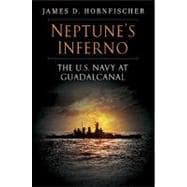
Note: Supplemental materials are not guaranteed with Rental or Used book purchases.
Purchase Benefits
What is included with this book?
| Maps | p. xv |
| Tables | p. xvii |
| Prologue: Eighty-two Ships | p. xix |
| Sea of Troubles | |
| Trip Wire | p. 3 |
| A Great Gray Fleet | p. 16 |
| The First D-Day | p. 27 |
| Nothing Worthy of Your Majesty's Attention | p. 44 |
| Fly the Carriers | p. 50 |
| A Captain in the Fog | p. 56 |
| The Martyring of Task Group 62.6 | p. 62 |
| Burning in the Rain | p. 80 |
| Fighting Fleet Rising | |
| A New Kind of Fight | p. 95 |
| The Tokyo Express | p. 109 |
| A Function at the Junction | p. 114 |
| What They Were Built For | p. 123 |
| The Warriors | p. 135 |
| The Devil May Care | p. 145 |
| The Visit | p. 150 |
| Night of a New Moon | p. 157 |
| Pulling the Trigger | p. 169 |
| "Pour It to 'Em" | p. 179 |
| Storm Tide | |
| All Hell's Eve | p. 191 |
| The Weight of a War | p. 200 |
| Enter Fighting | p. 208 |
| "Strike-Repeat, Strike" | p. 216 |
| Santa Cruz | p. 223 |
| Secret History | p. 237 |
| Turner's Choice | p. 243 |
| Suicide | p. 253 |
| Black Friday | p. 263 |
| Into the Light | p. 273 |
| The Killing Salvo | p. 282 |
| Death in the Machine Age | p. 290 |
| Point Blank | p. 299 |
| Among the Shadows | p. 311 |
| Atlanta Burning | p. 317 |
| Cruiser in the Sky | p. 326 |
| Regardless of Losses | p. 335 |
| The Thundering | |
| The Giants Ride | p. 345 |
| The Gun Club | p. 353 |
| The Kind of Men Who Win a War | p. 369 |
| On the Spot | p. 378 |
| The Futility of Learning | p. 385 |
| Future Rising | p. 398 |
| Report and Echo | p. 409 |
| The Opinion of Convening Authority | p. 416 |
| Ironbottom Sound | p. 423 |
| Acknowledgments | p. 431 |
| Ships and Aircraft Types of the Guadalcanal Campaign | p. 433 |
| Naval Battles of the Guadalcanal Campaign | p. 435 |
| Total Naval Losses at Guadalcanal | p. 437 |
| Source Notes | p. 439 |
| Bibliography | p. 465 |
| Index | p. 491 |
| Photo Credits | p. 513 |
| Table of Contents provided by Ingram. All Rights Reserved. |
The New copy of this book will include any supplemental materials advertised. Please check the title of the book to determine if it should include any access cards, study guides, lab manuals, CDs, etc.
The Used, Rental and eBook copies of this book are not guaranteed to include any supplemental materials. Typically, only the book itself is included. This is true even if the title states it includes any access cards, study guides, lab manuals, CDs, etc.